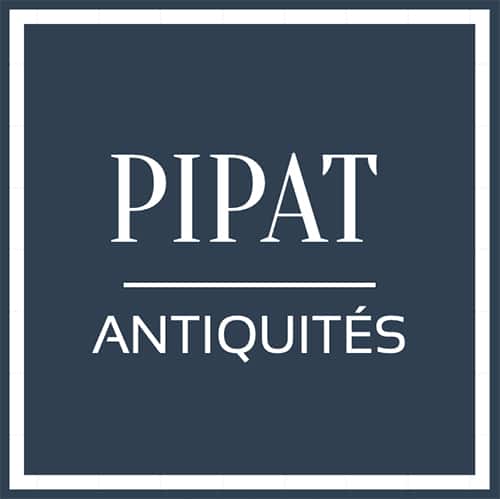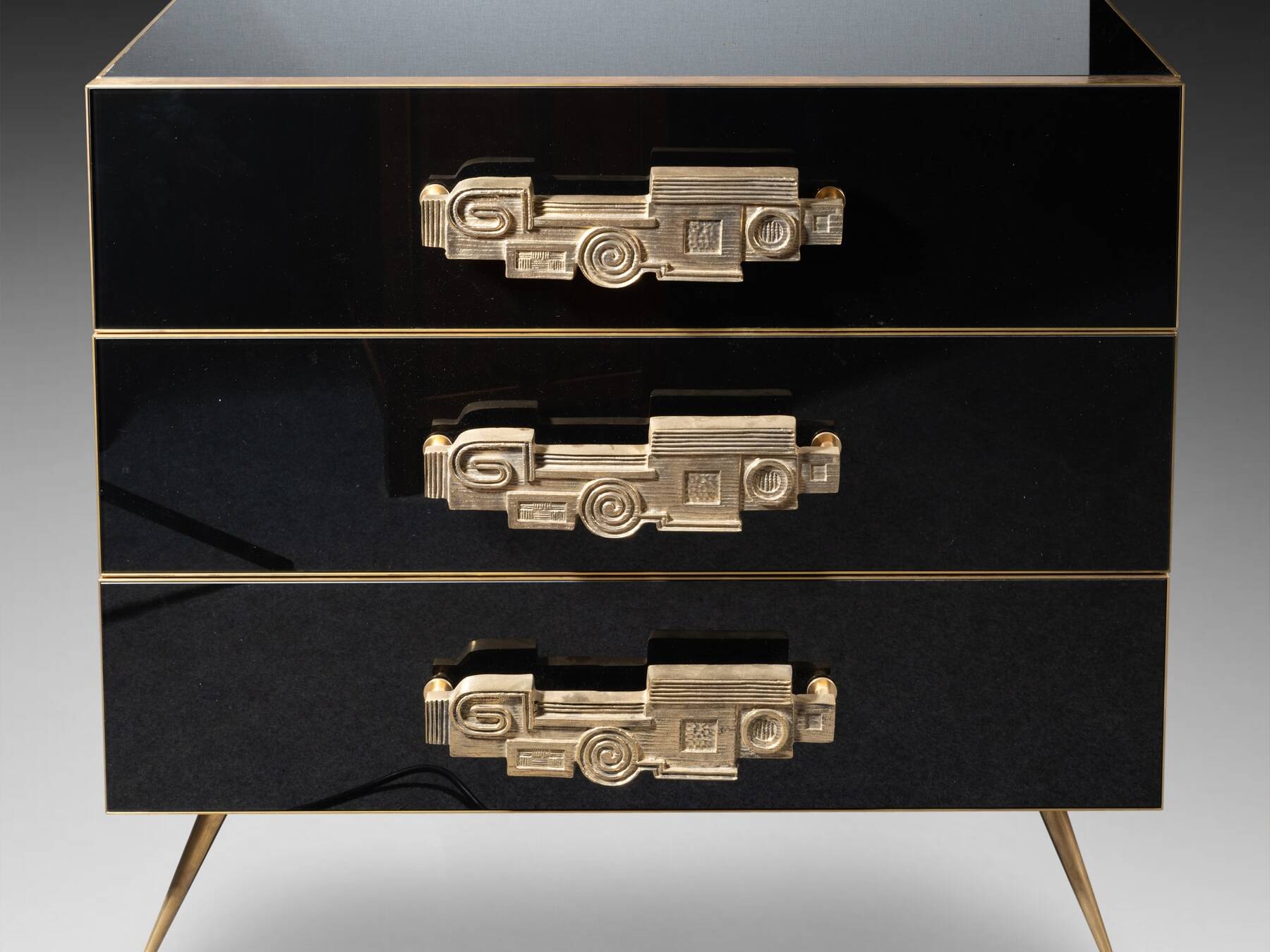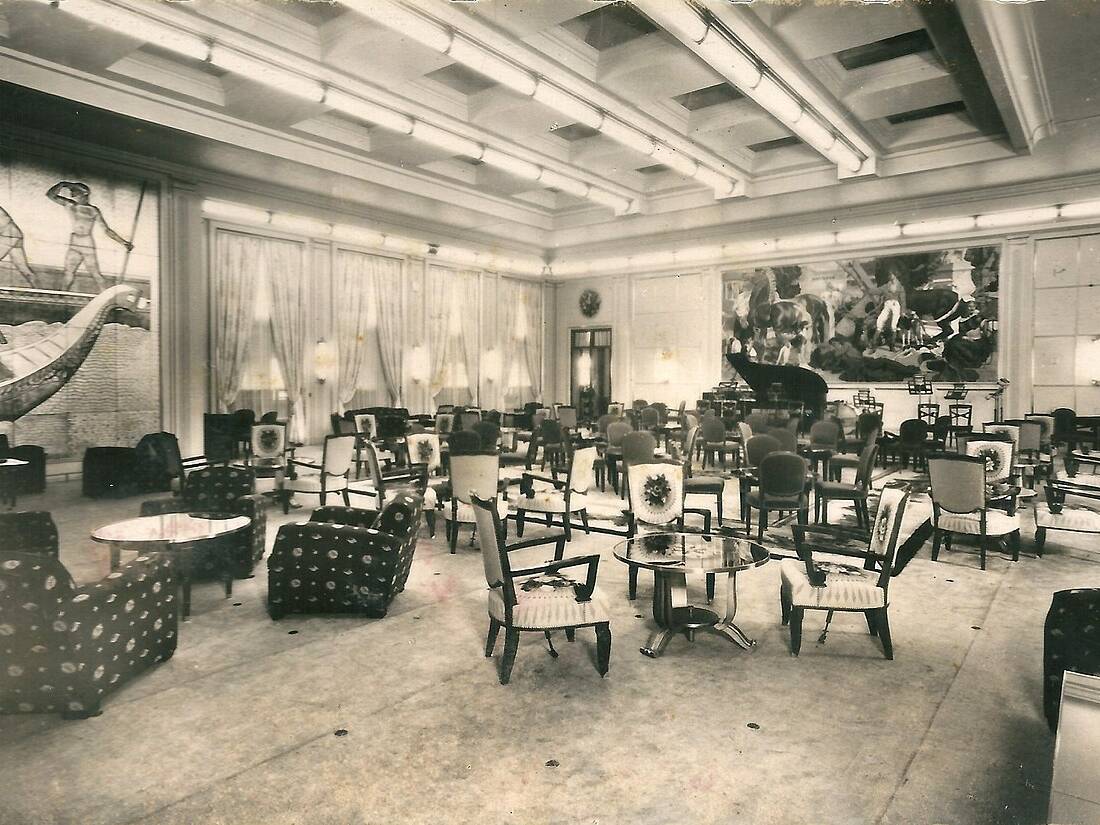Fountain of the Turtles or the Power of the Mattei in Rome
The Fontana delle Tartarughe, built in 1582 on Piazza Mattei, was then near the palazzo of the same name in the Jewish quarter of Rome, between the forum and Via Arenula which leads to Ponte Garibaldi.
In 1570, the restorations of the Aqua Virgo aqueduct – inaugurated in 19 BC. and known for powering the Trevi Fountain since 1453 – are finally complete. They announce a second construction site, that of the works of underground ramifications of the conduit in order to connect the ancient Champs de Mars to the most populated districts of Rome. These new ramifications are naturally accompanied by the construction of new fountains, one of which must be placed on the Place Juive, which has now disappeared.
The political stakes of these public facilities are not insignificant and neither is the importance of the Mattei family in Roman society. Among the oldest families in Rome, it was particularly famous for its talent in commerce, controlling the circulation of goods on the left bank of the Tiber by mobilizing the precious Jewish labor to which it guaranteed, in exchange, a strong protection.
So, under pressure from the Mattei, the fountain finally moved to the square closest to their palazzo, called piazza Mattei or Piazza delle Tartarughe, after the name of the fountain. In exchange for this modification of the urban program, the family agrees to pave the place as well as to maintain the fountain by keeping it clean.
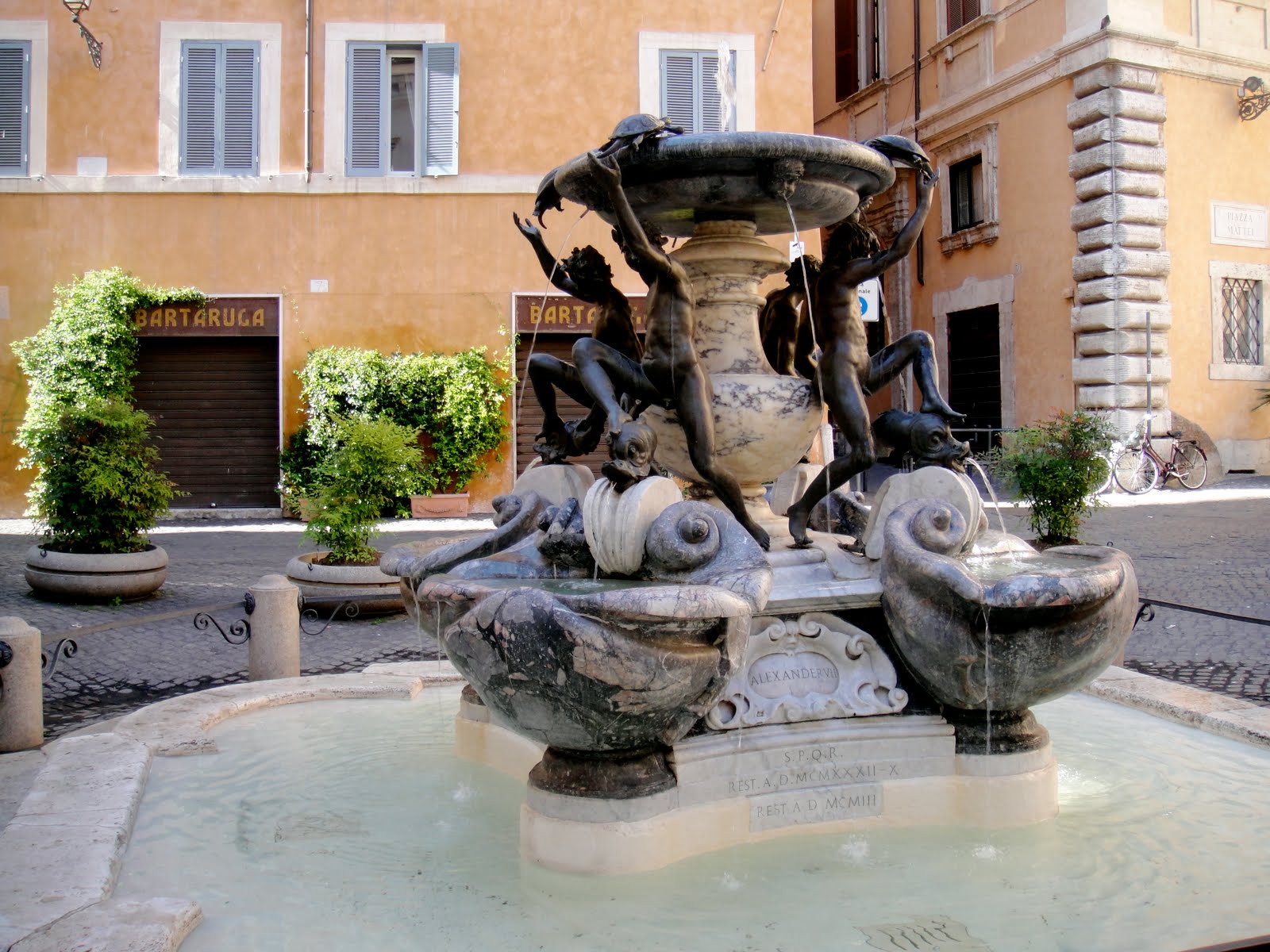
Giacomo della Porta Masterpiece
The fountain was made in the 1580s following a project by Giacomo della Porta (1533 – 1602). The latter, an architect of Mannerist art, an enthusiast of Baroque art, is already known and his talent sought after. He is the author of the dome of Saint Peter’s Basilica and that of several churches that he built or to which he contributed. He also worked on many of the most famous Roman fountains: that of Piazza del Popolo, that of Neptune or del Moro located in Piazza Navona.
For the turtle fountain, he imagined a basin with eight dolphins imagined in marble before bronze was preferred to mineral. Alas, the assembly of the fountain reveals the insufficient pressure of the water which does not make it possible to reach the planned elevation. Four of the eight dolphins must be give up. Those discarded are later used for the Fountain della Terrina once installed on the Campo dei Fiori and enthroned nowadays on the Piazza della Chiesa Nuova, but the dolphins seem to have disappeared today.
Even today, the turtle fountain remains one of the most beautiful fountains in Rome. What this superb piece of art in solid silver does not fail to celebrate.

A faithful reproduction of the fountain delle tartarughe, this solid silver piece plays on the use of water in Piazza Mattei to wash your finger on the table. Raised on a square base, the elegant curves of the baroque monument reproduce the four corner shells with the only difference that the precious shells, here in solid silver, are on the Roman fountain in Portasanta marble.

The four ephebes with mannerist bodies lean the tips of their feet on the edge of the fountain and on the heads of serpent-like dolphins. With one hand, they control the dolphins by the fin, with the other they help a turtle to climb on the upper part of the fountain.
The whole outlines a spiral movement where the circle formed by the ephebes rises with the movement of the dolphins towards the heights of the fountain. Giacomo della Porta signs here a baroque masterpiece in the purest Italian style.
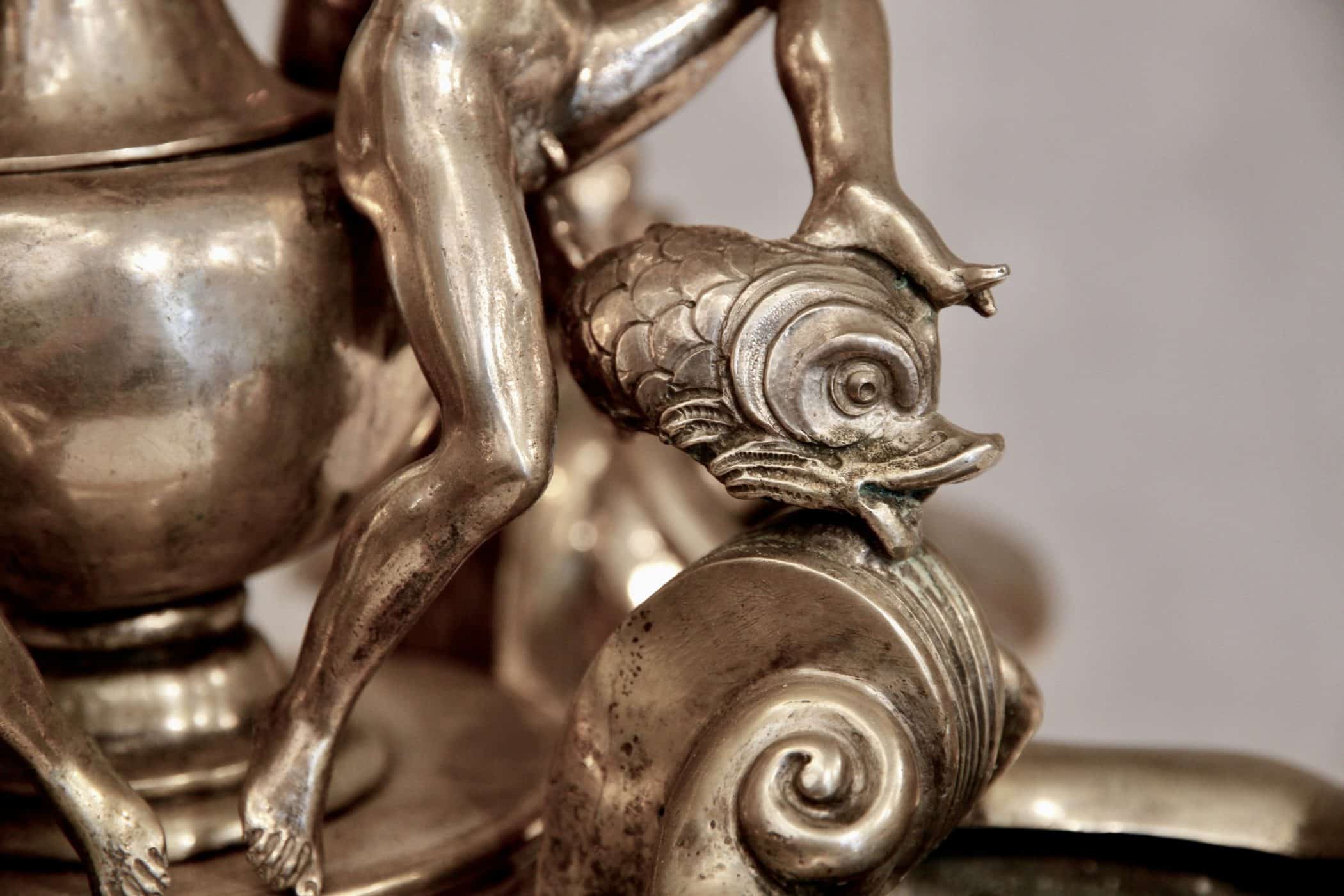
However, the turtles that make the fountain famous are not his work. They are a consecutive addition to the restoration of 1658, ordered by Pope Alexander VII (1599 – 1667), and entrusted to Bernini (1598 – 1680). Since the initial project had removed four dolphins, the fountain had this wobbly look of a work that is not finished. This impression was essentially given by the raised hands of the ephebes which did not touch the rim of the fountain and therefore blurred the finality of the gesture and the finished aspect of the monument. So, the addition of the four turtles came to fill these voids and at the same time made its celebrity.
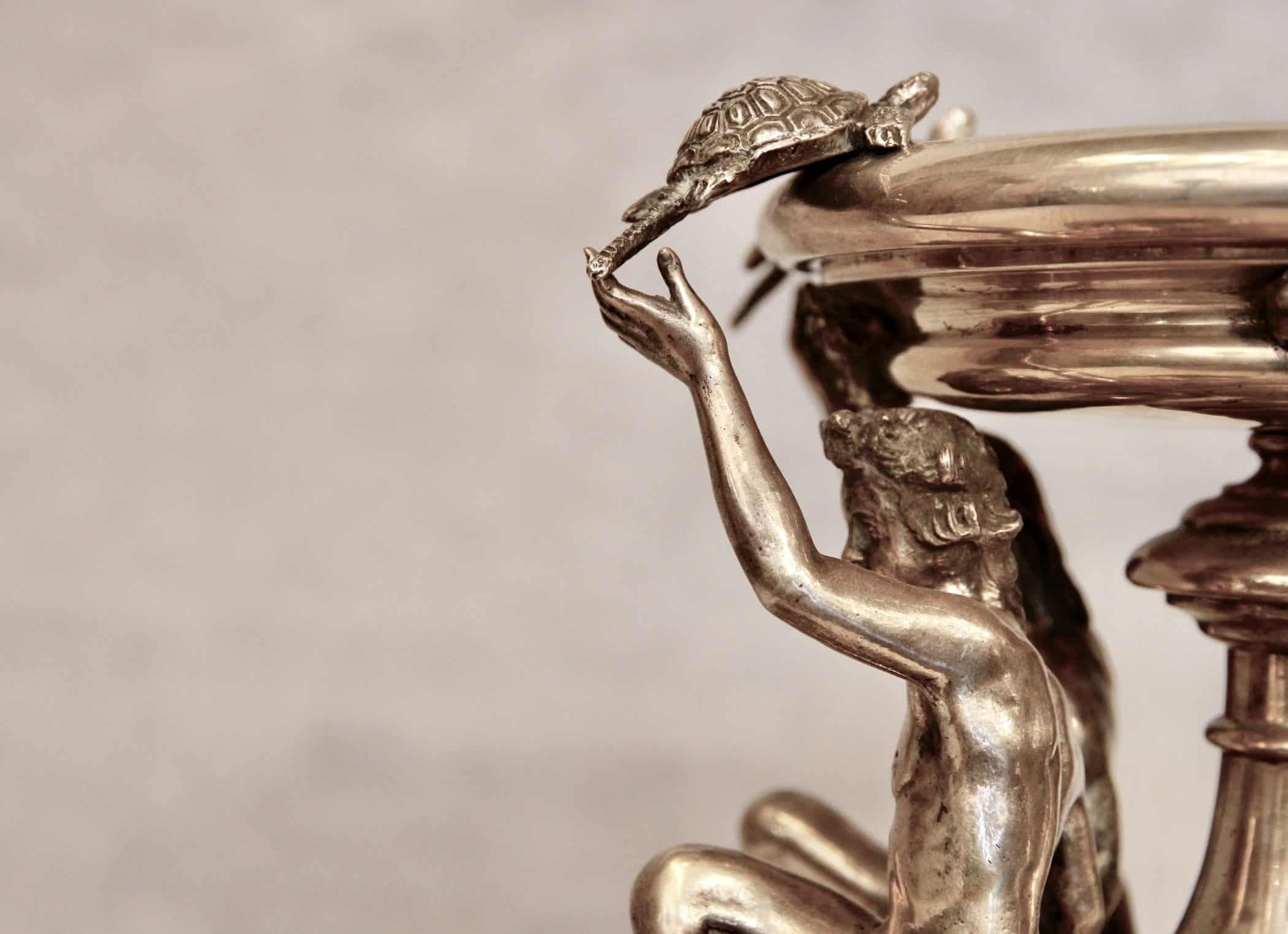
On the Roman fountain, four text blocks do not fail to recall the restoration of 1658. The Latin text reads as follows:
« ALEXANDER VII / RESTAVRAVIT / ORNAVITQVE / YON PONTIFIC IV »
On our object, the goldsmith has kept the text blocks without however engraving the inscriptions, for lack of space most certainly.
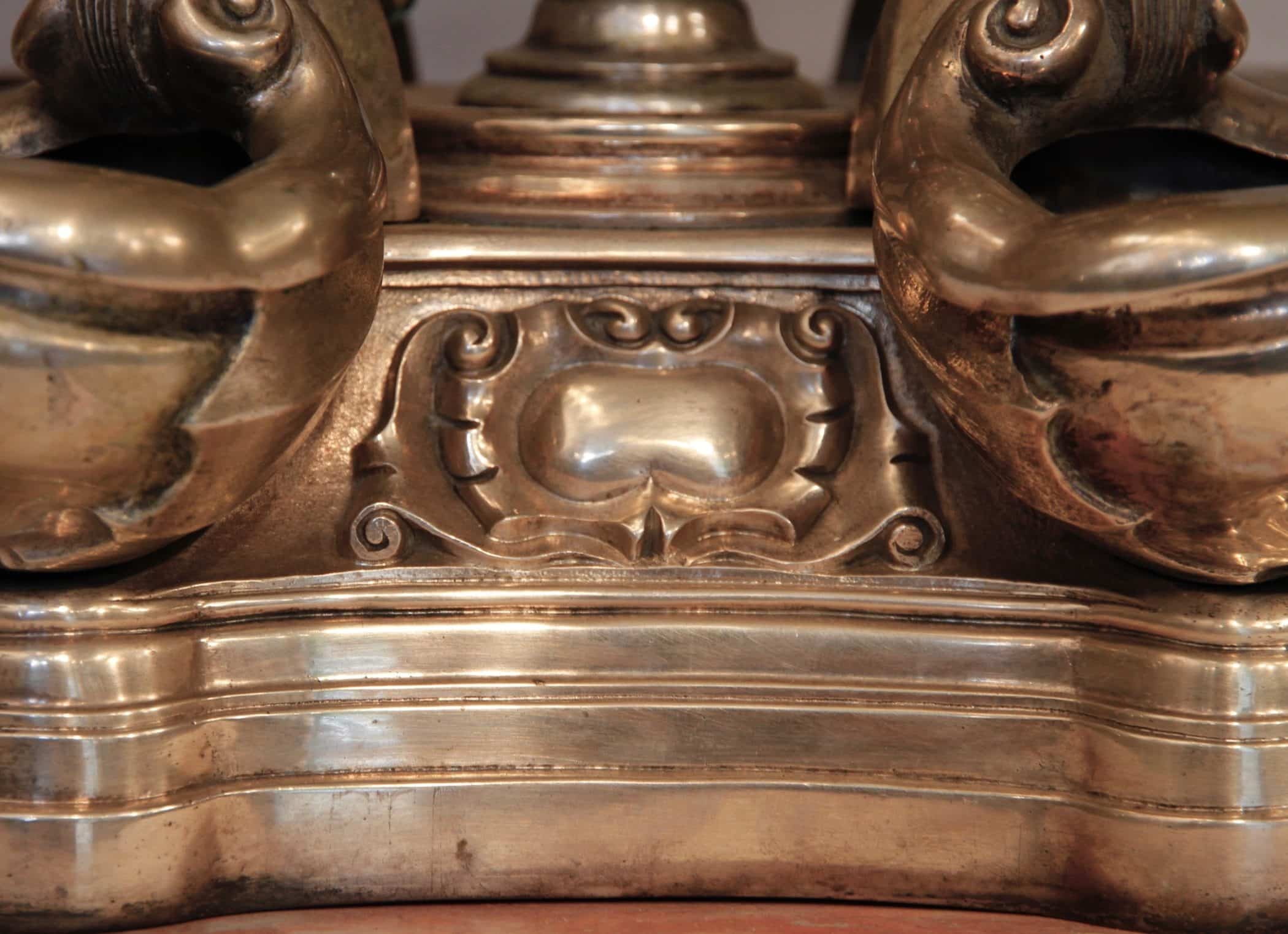
The Roman Goldsmith's House Tavani
The dynasty of Tavani goldsmiths is none other than the one that has supplied the papacy for three generations.
The house produced its first works for the Vatican under the pontificate of Pius X (1903 – 1914), born Giuseppe Melchiorre Sarto (1835-1903).
Located in the heart of Rome, the Tavani workshops are notably entrusted with the restoration of the bronze doors of the colonnade of Saint Peter. They are also the craftsmen of the presents offered by the Pope on the occasion of his travels. Thus, Aldo Tavani is the author of a silver luminary for the sanctuary of the nativity of Nazareth, of the golden rose and its rosary for the sanctuary of Our Lady of Fátima in Portugal and that of Our Lady of Cobre (Cuba).
Our silver finger-rinse fountain is also the work of this eminent dynasty of craftsmen and demonstrates, if need be, the mastery of these renowned goldsmiths. Cette pièce a été vendue dans notre boutique bordelaise en 2018.


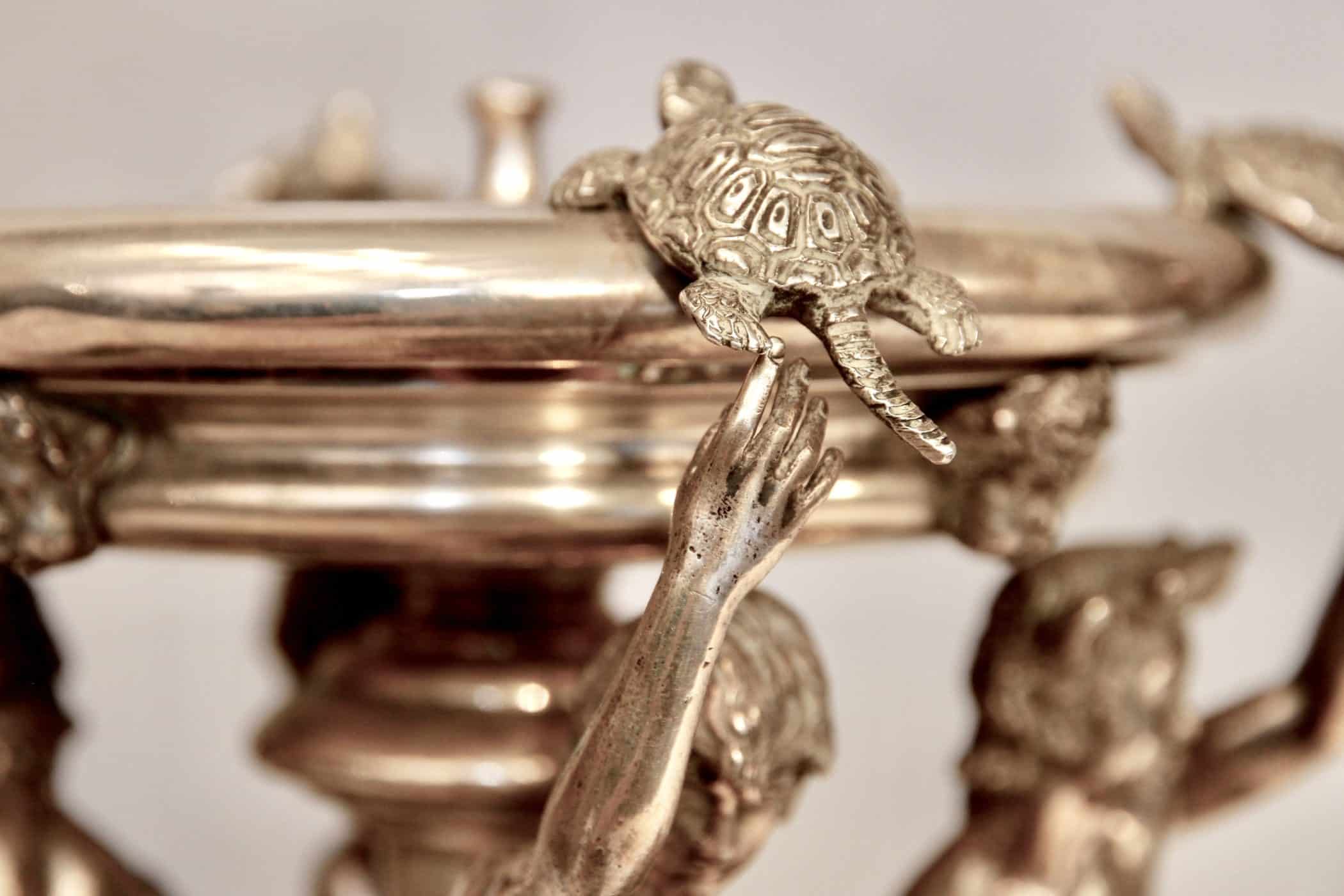
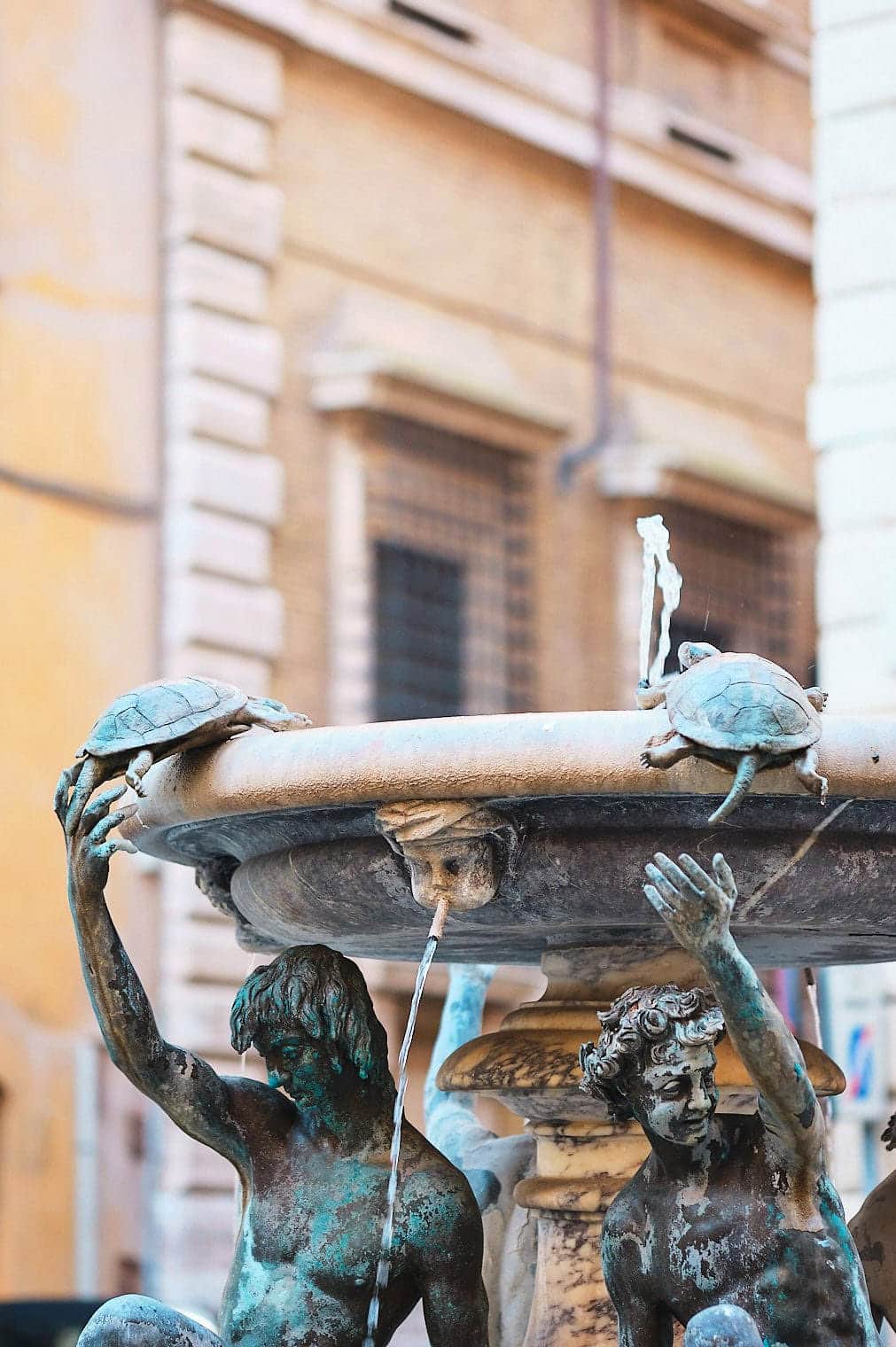
Marielle Brie
Art Historian for Art Market and Cultural Media
Author of the blog Objets d’Art et d’Histoire
Autres ressources et documentations
28 June 2025
Plaster Sculptures, Plaster Casts
For a long time, plaster casts suffered from a poor reputation. Often regarded as crude replicas, and sometimes even dismissed as inexpensive imitations, they nonetheless had…
17 April 2025
The Middle-Ages Furniture
Rare and highly sought-after, Middle-Ages furniture is making a strong comeback. An overview of this market, where enlisting the guidance of a professional is strongly advisable.
18 March 2025
Murano Glass Furniture
Since the beginning of the 20th century, Murano glassmakers have been exploring new horizons. After classic lighting and decorative art, Murano glass is now used to adorn…
16 December 2024
A bronze triton after the sculptures of François Girardon (1628 – 1715) in Versailles
This fountain element is all the more admirable as it is sculpted after the masterpieces of the Pyramid Basin, on the parterre of the North Wing of the Versailles gardens.
18 November 2024
Tyco Bookcase, by Manfredo Massironi, for Nikol International
A pure creation of optical art research in the 1960s, the Tyco library shelf designed by Manfredo Massironi invites the viewer to bring the work of art to life on a daily basis.
3 August 2024
The Ocean Liner Style
In the 20th century, the immense ocean liners connecting the Old Continent and the New World were ambassadors of tastes and innovations on both sides of the Atlantic.
